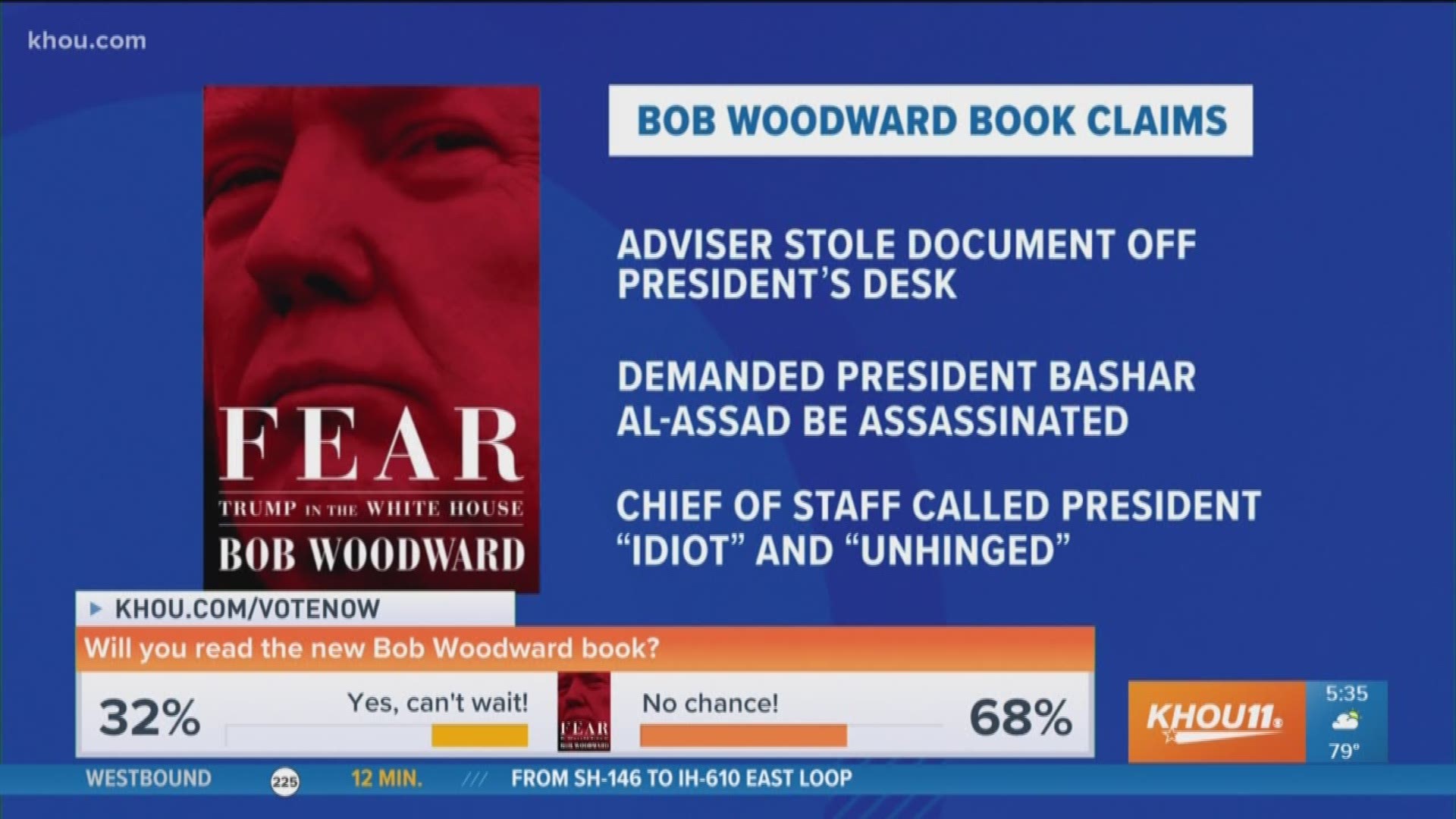

In recent times we have been absorbed by the problem of the barrage of fake news and the attempts of a hostile foreign government to influence elections.
#BOB WOODWARD TRUMP DOSSIER FULL#
Her final conclusions about her life so far are full of grace and maturity, and we can feel confident in expecting great things for Louisiana’s future. She is bright, resourceful, brave, and has a winning sense of humor. She has a lot of luck and an unexpected source of love and support.Įvaluation: Louisiana is a wonderful heroine. You are being forced to make this decision at an early age, but that does not mean that you cannot do it well and wisely. We all, at some point, have to decide who we want to be in this world.


“I want you to know something, Louisiana. The local preacher, Reverend Obertask, told her: Then they “imposed” on the owner of the “Good Night, Sleep Tight” motel for a room.īut something unexpected happened, and Louisiana learned she was not who she thought she was. Louisiana took over the wheel and got them to a dentist in the nearest town, Richford, Georgia, where they “imposed” on a dentist. They did get gas, and then they continued on, until Granny ran off the road complaining of dental pain.

“Granny and I were always imposing on people. Like so many times in the past, they were forced to “impose” on people: Soon enough they ran out of gas, and, as usual, had no money. This has happened before.”īut before Louisiana knew it, they had crossed the border into Georgia. “I thought that I was caught up in some middle-of-the-night idea of Granny’s and that when the sun came up, she would think better of the whole thing. Louisiana, who narrates the story, didn’t know what was happening at first: Louisiana Elefante, 12, lives with her Granny in Florida, but as the story opens, Granny gets Louisiana up at 3 a.m. Thankfully, that omission posed no obstacle to understanding and loving this book for middle graders and up. This is a companion to book to National Book Award Finalist Raymie Nightingale, which I did not read. I was always interested as a child about how inventions came about, and this book will entertain as well as enlighten kids on a subject that is bound to be of interest to them. Be sure to check out her blog posts of illustrated recipes, here.Įvaluation: This fun and engaging book tells “the story behind the story” of one of the most iconic foods in American culture. In an interesting departure from other illustrators of children’s books, she began her career by selling her paintings on the street as a way to earn extra income. The best thing about this book are the colored pencil and watercolor illustrations by self-taught artist Felicita Sala. “George’s eclectic clientele – which included millionaires, farmers, politicians, heads of industry and laborers – came to him in ‘swarms, herds, droves and flocks,’ according the the New York Tribune of December 27, 1891.” But the outline of the story is true, as is the fact that his crisp potatoes were in such demand that customers began to order them as “takeout” in a paper cone. This book begins with the epigraph: “the story you are about to savor is a fictional tale with a helping of truth.” The problem is, as the author writes in a note at the end of the book, the story about George Crum being the original inventor of wafer-thin potatoes has not been substantiated. In those days, people of color were not allowed to take out patents on their inventions, and Crum never profited from his invention. George went on to build his own restaurant and featured potato chips in a basket placed on every table. Other diners began requesting what would soon be called Saratoga Chips. To everyone’s surprise, the guest loved them. Crum, irritated, sent back a dish of fries so thin, they couldn’t even be speared with a fork. One of the dinner guests complained that Crum’s French fries were too thick and sent back the order. The son of an African-American father and a Native American mother, George Crum was working as the chef of an elegant resort in Saratoga Springs, New York in the summer of 1853 when he incidentally invented the chip. Most people aren’t aware that it was a mixed-race inventor who came up with the potato chip, the most popular snack food item in America.


 0 kommentar(er)
0 kommentar(er)
